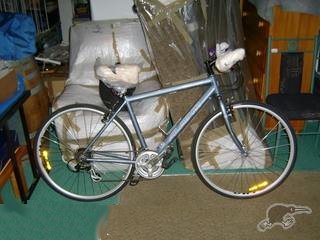If you want to get rid of stuff and dont have the time to sell it, i suggest Trade My Stuff
The key reasons for low prices on trademe are:
- Bad finish time
- Wrong category
- Crap or no pic
- Crap title/description
- Answer Questions
- Feedback
- Auto Extend
- Prices/Postage
- Shorthand
Bad Finish Time
Having an auction that finishes at 3am in the morning may NOT get you the best price for your goods. The reason? Well how many people are up at 3am browsing trademe? Seriously? Look at the stats on the trademe website, find out the most popular time and day, aim to close your auction at that time. This means you will have more people watching.
Find your Market here
Wrong Category
If you want to find a fish bowl, you look under pets -> fish. Not kitchen bowls! Therefore why would you list it there?
Entirely so many auctions finish below their potential because they are in the wrong category.
However on the upside, often I have bought things for less that were listed in the wrong category and made a bit of money on them reselling them with the right category 🙂
Crap or no pic
Its a fact that a picture will sell an item. If im looking in a shop i like to see what im buying before i buy it.
A camera is cheap and you only need a 1-2MP one for trademe stuff.
When taking photos of items, take them from the same level or slightly raised from the item, this lets the person see it from the front and perhaps other sides.
Make sure there isn’t a lot of background noise – ie messy shelves, tv, garbage, household stuff – in the background. A sheet behind or under the item means users can ONLY see the item for sale and don’t get distracted.
Often ive seen an item and then the background is a filthy garage – it makes a person not want to buy an item because i would assume its probably not looked after like the rest of the garage.
A blurry or dark picture is worse than no picture at all almost, do take a couple of pictures, choose the best one. Things always look nicer when photographed outside in the sunshine or in natural light rather than using a flash. Make sure also the item fills the photo – there isn’t a lot of blank space around it. Sometimes things need a hand or person standing next to it so users can get perspective on the actual size – measurements don’t always do the trick (though always include them).
Doesnt hurt to add a 30px bright red or orange or similar border to your main photo so it stands out amongst the crowed either 🙂
Please check that your reflection is NOT in the photos, plenty of auctions have been made famous by hairy naked mens reflections in items they were selling!! (yes the makeup guy on trademe and the kettle man on ebay http://www.snopes.com/photos/risque/kettle.asp)
Crap title/description
If your title sucks, so will your auction. If a person is looking at a category listing or search of 50 items all identical yours will NOT stand out if it says ‘fish bowl’.
Try something like ‘Super clear large round fish bowl 500mm’. Some people resort to using patterned ASCII (****** LIKE THIS ********, or *~.~`OR THIS`~.~*), though im not overly a great fan of it.
Particularly for those where English is a second language, MAKE SURE YOU SPEAK GOOD ENGLAND! If you cannot take the time to make sure your auction reads fine then others cant find the time to bid on it. Nobody is going to bid on auction that are in txt speak (THS IS GD 4 U), or yelled (ALL IN CAPS IS CALLED YELLING), or even in alternating caps/non caps (tHiS lOoKs StUpId).
Contrary to popular belief, not everyone is your ‘homie’ or ‘bro’, talking ‘getto’ or that ‘maori/billy T’ street slang isn’t that great, in fact some people see you typing as if you are talking to you mates may presume that you are an uneducated idiot, or thief, and not wish to trade with you.
Answer Questions
If you don’t answer questions, people will assume that you are trying to hide something. Always be polite no matter how annoying or stupid a question is.
Feedback
If your feedback sucks, or is low then you won’t get the same price for your goods. People DO understand if you have the odd bad feedback however from the jerk who sold you a dud and then gave you bad feedback because you placed bad feedback first.
Dont be a git and place bad feedback on others if you were the one at fault, NZ is a small place and word does get around 🙂
Auto Extend
ALWAYS USE AUTO EXTEND! Its a great feature. Most auctions get their bids in the last couple of minutes, if your auction doesn’t auto extend then you won’t get as good a price.
Prices/Postage
Always (where possible) state postage costs. Dont quote $3.50 then send it in a 90c envelope (thanks babysister for that suggestion) $1 reserve does NOT mean its going to sell for $1, it just means that it is definately going to be sold at the end of the auction.
I often have $1 reserve auctions as they bring in a lot of watchers very early on thinking they are going to get a bargin, then at the end they all get hyped up in a bidding frenzy and often you will get a better price than you could have otherwise. This only really works if you follow the other rules.
Shorthand
Bump = This is what somebody says in the forums to ‘bump’ up a topic, They are listed in ‘last replied to’ order
a hundy = hundred dollers
ROTFLMAO = Rolling on the floor laughing my ass off (ROTFL you can guess from that)
LOL = Laughing out loud
And if all that confuses you and you just want to get rid old stuff, try checking out these guys who will sell your stuff on trademe for you!
Liz


